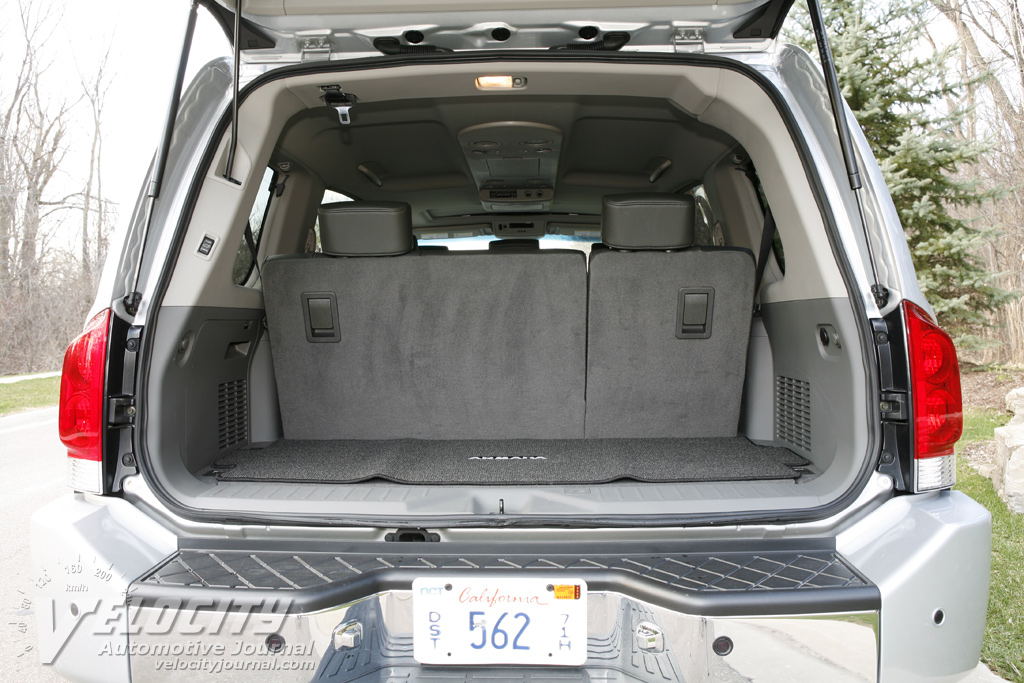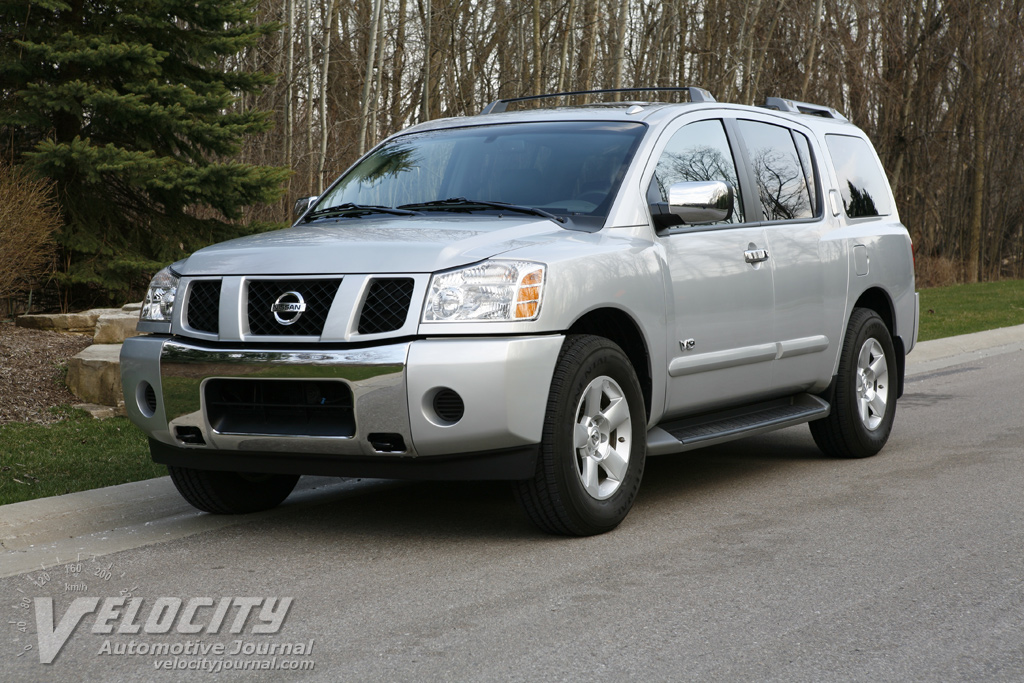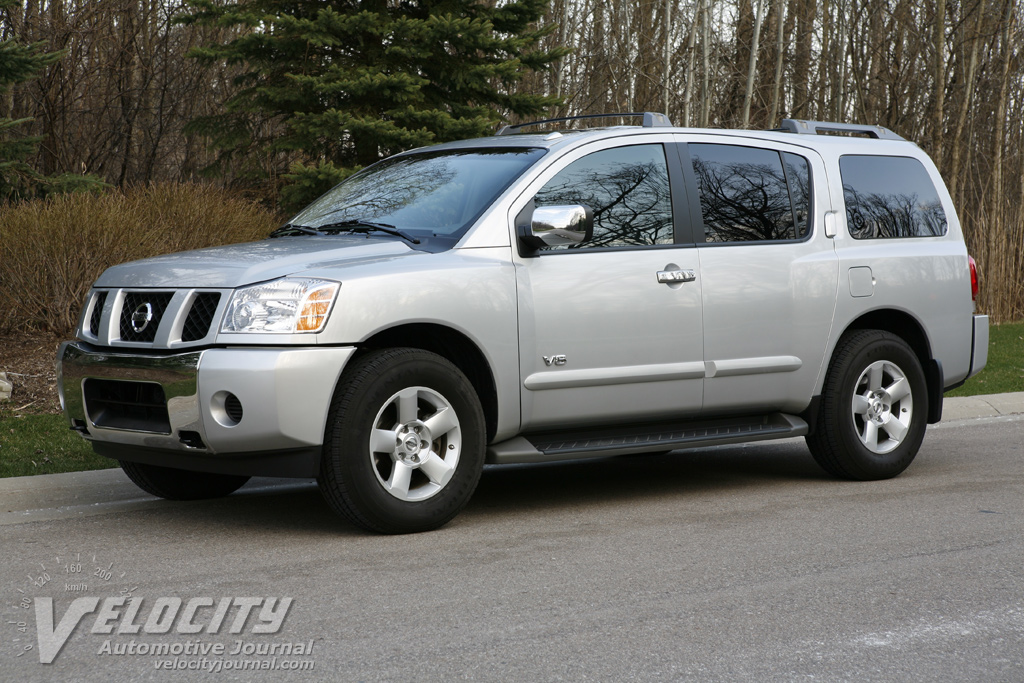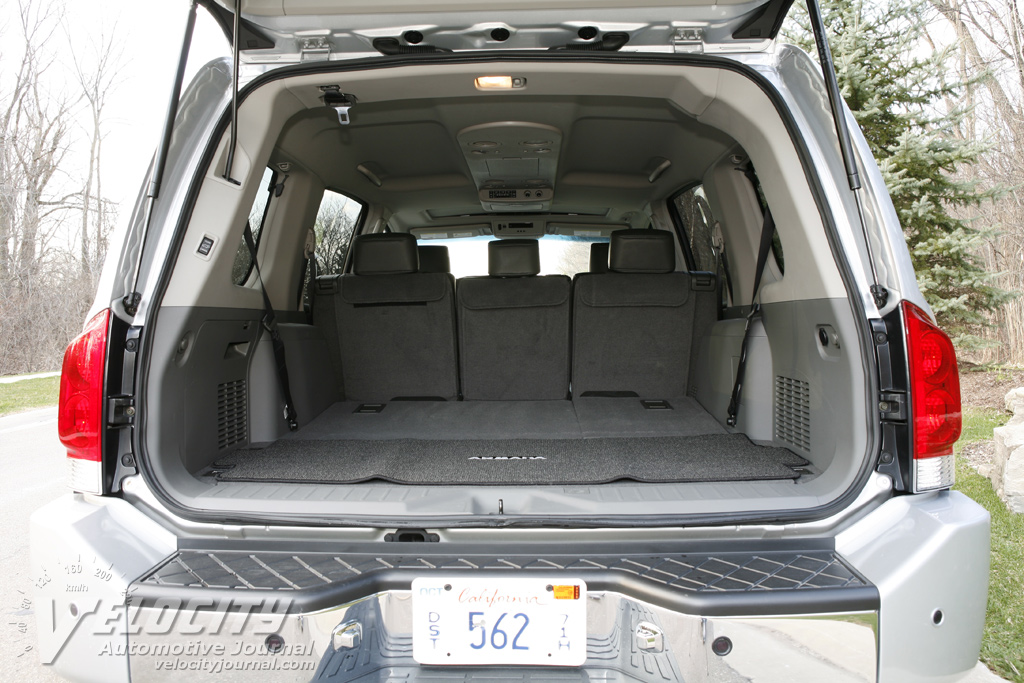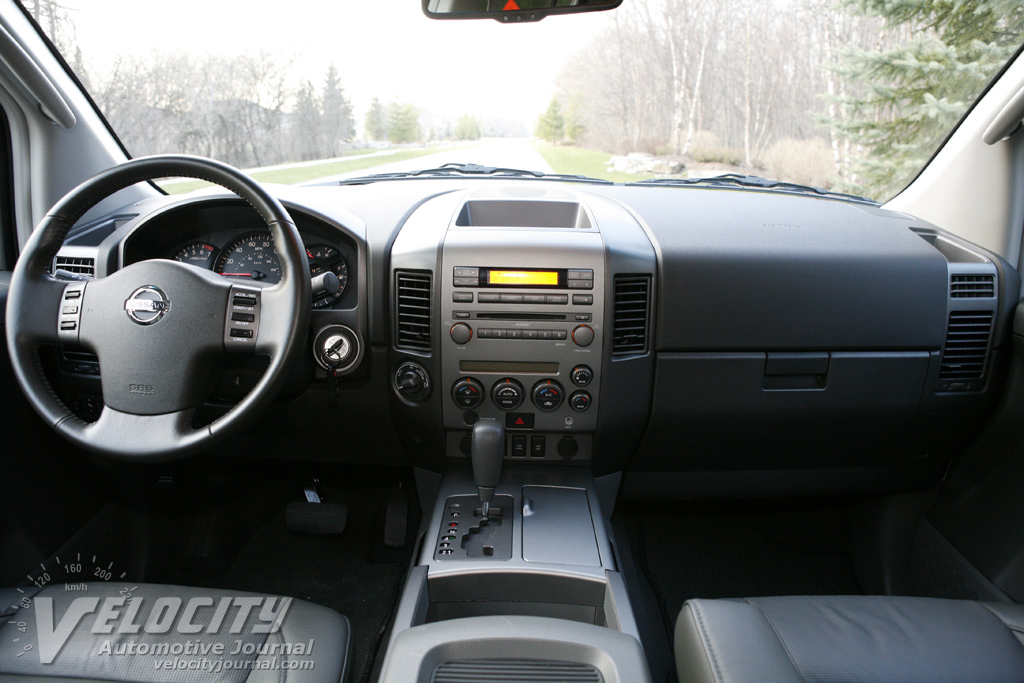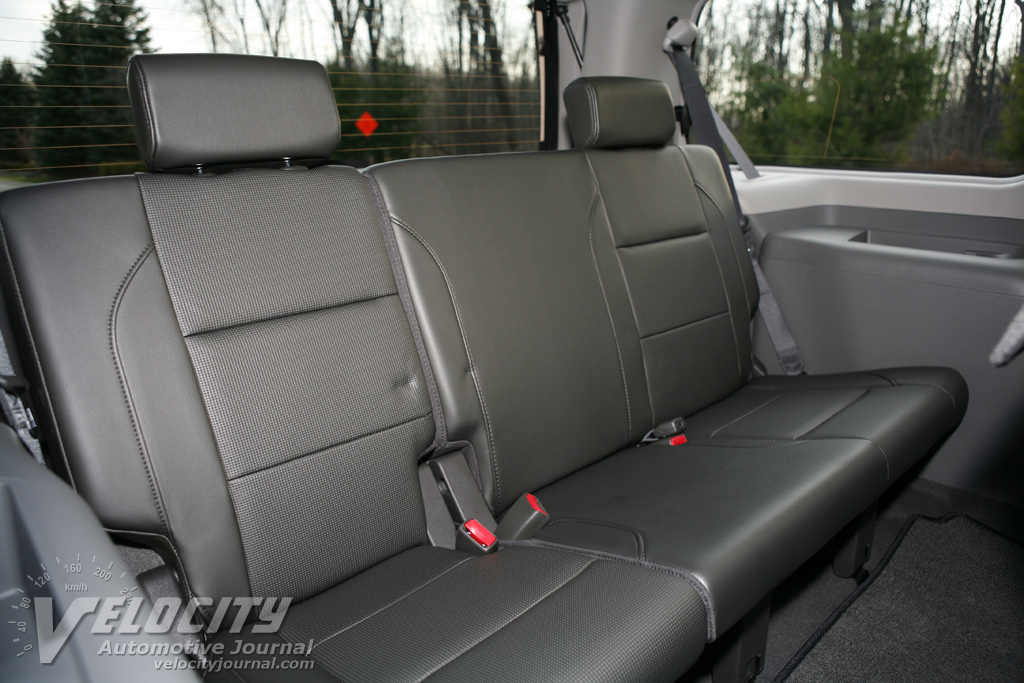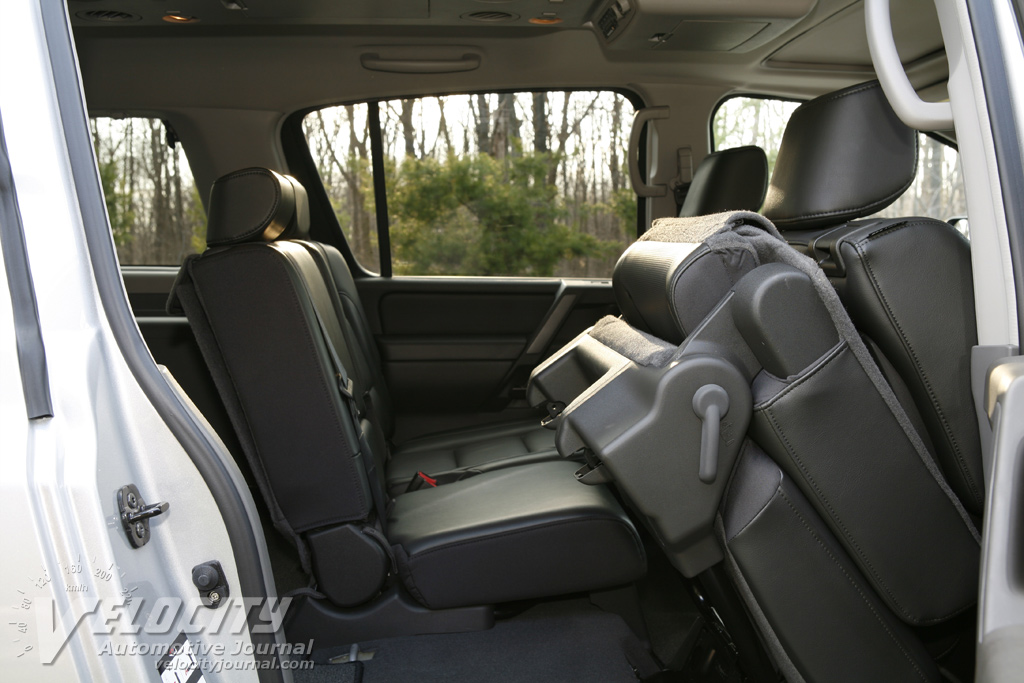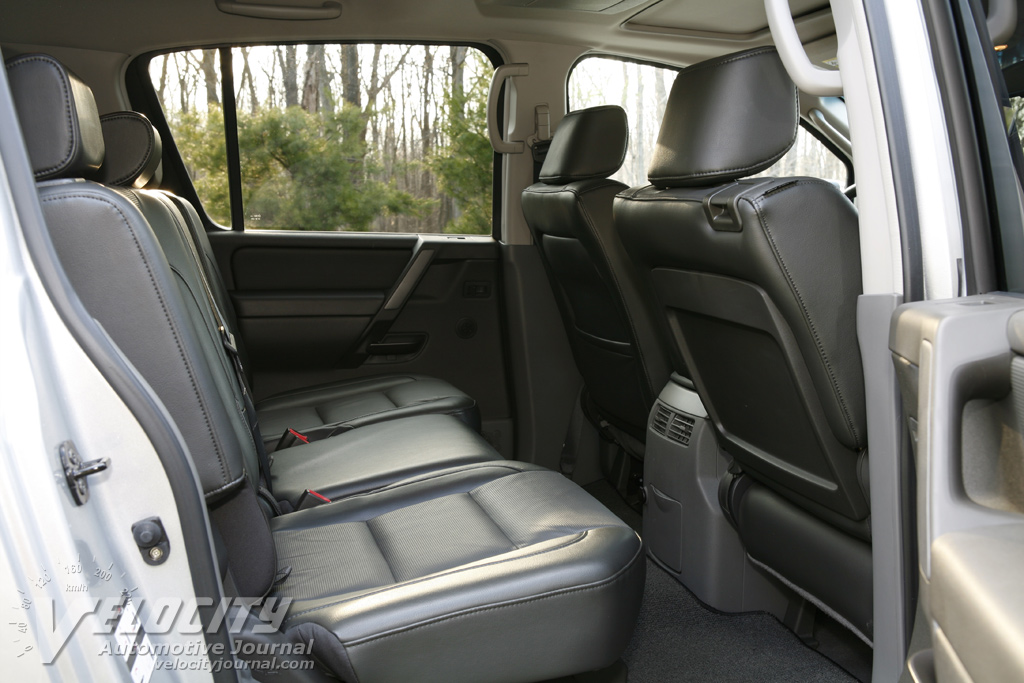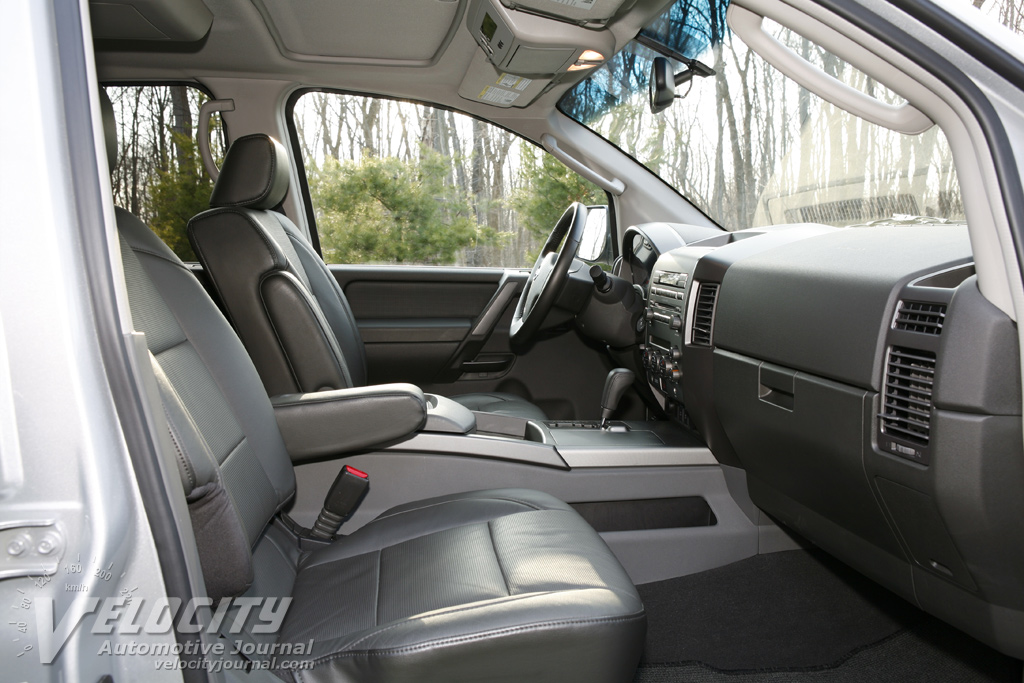Review: 2007 Nissan Armada SE
04/13/2007
Shahed Hussain
Nissan has been selling SUVs in the US for over 20 years. The midsize Pathfinder established itself as a credible competitor in the then newly popular niche. But until recently, Nissan stayed out of the full-size SUV market that has been very popular with American customers. Nissan finally ventured into this lucrative segment with the burly 2004 Armada. Aimed directly at Ford Expedition, Chevrolet Tahoe, and Toyota Sequoia customers, the Armada stands apart with its unorthodox styling, and the most powerful standard engine in its class.
The Armada is available in two trim levels: SE and LE. Both models have a choice of 2WD and 4WD powertrains. Pricing ranges from $34,950 for the Armada 4 x 2 SE to $43,050 for the Armada 4 x 4 LE. Nissan also sell FFV (Flexible Fuel Vehicle) versions capable of using E85 ethanol fuel. We tested the $37,750 Armada SE 4 x 4 equipped with Sunroof Package with XM ($4,100), Tow Package ($650), DVD Entertainment System ($1,600), Floor/Cargo Mat ($210), and Rear Splash Guards ($80). Add destination charges ($705) for a grand total of $45,095. Compared to a similarly equipped 2007 Chevy Tahoe LS ($44,680), the Armada's pricing is competitive. The Tahoe has more luxurious interior (although the 2008 Armada addresses this deficiency), but offers only a 4-speed automatic vs. a 5-speed automatic in the Armada. If pricing for these full-size SUVs seems exorbitant, it's because the manufacturers get their highest profit margins from these vehicles. If you're in this market, you have to be willing to pay dearly for the privilege.
Only a V-8 will do for a big SUV, so Nissan equipped the Armada with a DOHC 5.6L engine that cranks out 317-bhp and 385 lb.-ft. The all-aluminum Endurance V-8 has the grunt to accelerate the nearly 5,600 lbs. Armada with ease. Yet despite its muscular performance, engine noise is subdued except at full throttle, when its unmistakably throaty rumble penetrates the cabin. A standard 5-speed automatic changes gears without fuss, yet downshifts without hesitation for swift acceleration. The leather-covered shifter allows direct gear selection through the gated center console. However, the transmission controller programming ensures that in everyday driving manual gear selection is rarely required.
Driving the Armada is actually more enjoyable than one might expect. Unlike many other large SUVs that seem ponderous and sluggish on the road, the Armada rewards the driver with relatively nimble handling, coupled with sprightly acceleration. With its quick steering and immediate throttle response, this SUV navigates through traffic confidently. Credit the Armada's sophisticated A-arm suspension for its smooth, comfortable ride. Although the 265/70R18 Continental tires have minimal tread rumble, the tall sidewalls flex too much for optimum steering response. We think lower profile 60-series tires would improve overall handling, without sacrificing too much ride comfort. Highway stability is above average up to about 85 MPH. Go faster, and the Armada's body oscillates up and down slowly, probably due to the overly soft tires or underdamped suspension. Chassis stiffness is exceptional, with minimal flex over potholes and bumps. Our test vehicle had over 8,000 miles on the odometer, and showed no squeaks or rattles on the roughest roads. Over bumpy roads or around curves, the independent suspension keeps the rear axle from upsetting the chassis. Although Nissan equips the Armada with 12.6" disc brakes front and rear, a spongy pedal doesn't enhance confidence. A heavy SUV such as the Armada deserves bigger brakes to better match its overachieving powertrain. Interestingly, the 2008 Armada has slightly thicker rear disc brake rotors: 0.63" vs. 0.55", which may partially address our concerns. Nissan does equip all Armadas with a full complement of active safety features, including standard ABS, EBD (Electronic Brake-force Distribution), BA (Brake Assist), and VDC (Vehicle Dynamic Control). Front-side airbags and side-curtain airbags are also available.
One downside of the Armada's lusty V-8 is its appetite for gasoline. Our tested Armada SE 4 x 4 gets an EPA City/Hwy. estimate of 13/18 MPG. Choose the SE 4 X 2 model, and the highway estimate rises to 19 MPG, a negligible improvement. Newer SUVs such as the 5.3L Chevrolet Tahoe get better fuel economy (up to 21 MPG highway), but sacrifice maximum torque (340 lb.-ft.) compared to the Armada (385 lb.-ft.). Perhaps Nissan should consider adding a diesel engine option for customers seeking superior fuel economy.
When Nissan designed the Armada's interior, utility and practicality clearly were priorities. Knobs and switches are large and easy to grip. A center-mounted speedometer is flanked by a tachometer on the left. Smaller gauges for fuel, coolant temperature, oil temperature, voltmeter, and oil temperature are on the right. A rotary knob on the center console switches between Auto, 4WD High, and 4WD Low modes. The leather-wrapped steering wheel has audio and cruise controls on the spokes. We recommend the optional Bose® 6-CD audio system for its sound clarity and thumping subwoofer. Nissan added an auxiliary input below the dashboard HVAC controls for an external MP3 player. Almost all interior panels are finished in rather dull hues of medium gray. Disappointingly, some trim fits are not up to class standards. Nissan was clearly aware of the Armada's interior deficiencies, because the 2008 Armada has a completely redesigned dashboard and door panels, with significant improvements in material quality and appearance.
Our tested Armada SE was equipped with the optional leather seats, which were comfortable, but lacked lateral support. Second-row seat accommodations are spacious, with plenty of legroom. However, the center seat is best suited for short trips, because the cushions are as flat as a board. A separate dual-zone climate control system ensures rear passengers can set the HVAC system to their preferences. Entertainment via the optional overhead console-mounted DVD system should keep kids and adults occupied on long road trips. To access the 3rd row seats, the outboard 2nd row seats flip forward by releasing a bottom lever that disengages the seat from the floor hook. Although climbing into the back row is actually rather easy for normal-sized adults, the seats are best suited for kids. The flat seat cushions are too short for adequate thigh support, while the shallow footwell means that adult passengers will sit with their knees up. Even so, the seats are certainly usable for short trips without too much discomfort. For cargo hauling, the 60/40 split 3rd row seats fold flush to the floor, while the 2nd row seats flip forward. The tailgate lifts up for easy access to cargo, or the glass backlight can be flipped up separately if required. Like most other big SUVs, the Armada excels at hauling bulky appliances and home improvement supplies.
Like any Japanese manufacturer, Nissan studied current full-size SUVs thoroughly when designing the Armada. Despite the inherent compromises required for a big truck, performance and handling were obviously a major priority, because the Armada is arguably the most sporting large SUV. With its powerful 5.6L V-8 and a fully independent suspension, the Armada appeals to drivers who need SUV capability, but also demand entertaining handling and acceleration. Nissan addressed our main criticism of the Armada with a redesigned and upgraded interior for the 2008 model year. We still believe that more powerful brakes and lower profile tires would be a welcome improvement, but perhaps that will have to wait until the next-generation Armada.

